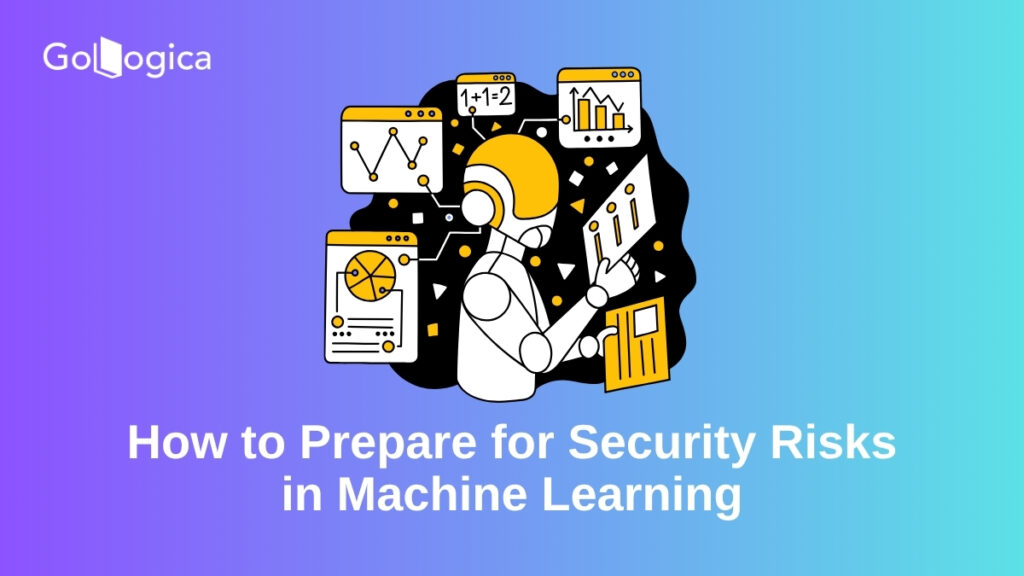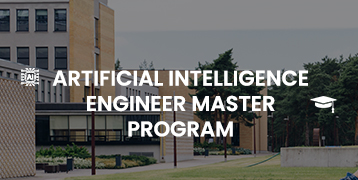
Table of contents
Introduction
Secure Data Handling
- Data Encryption
- Data Minimization
- Data Governance
- Data Integrity
Model Protection
- Adversarial Training
- Regular Model Audits
- Model Inversion Protection
Infrastructure Security
- Network Isolation
- Access Control
- Secure APIs
Continuous Monitoring and Incident Response
- Anomaly Detection
- Incident Response Planning
- Threat Intelligence
Education and Best Practices
- Security Awareness Training
- Secure Design Principles
- ML Security Top Ten
- Data Preprocessing
- Model Retraining
- Cybersecurity Threat Intelligence
- Reinforcement Learning
Conclusion
Introduction
As machine learning is being applied in more real-world scenarios, there is a need to understand the possible security concerns. Machine learning models, like any other technology, are susceptible to attack. Here, the impact of the attacks on the accuracy, speed, and reliability of models can be high.
They consist of data poisoning, where the attackers provide the system with their own malicious or false data, deceiving the model during learning. This is a second threat, model theft, where an individual attempts to copy or steal an already trained model and utilize it for personal gain. Others consist of adversarial attacks, where minor, well-designed modifications to input data can deceive the model into producing incorrect predictions.
To be ready for such threats, developers and data scientists must practice safe habits. This involves verifying and cleaning data, ensuring secure sources, and periodically running models to detect unusual activity. Keeping the software current and having access controls also minimizes the threat of attacks.
By finding and removing these threats early on in the development cycle, groups of developers are able to construct more secure and trustworthy machine learning systems. Security is not a matter of technology, it’s a matter of establishing trust in AI.

Secure Data Handling
In machine learning and modern data systems, safe data management is essential to preserving privacy, guarding against unwanted access, and guaranteeing system dependability. The four pillars of secure data management, data encryption, data minimization, data governance, and data integrity all strongly support the protection of sensitive information.
Data Encryption means the process of transforming readable data into encrypted data which can only be opened or decrypted by the proper key. It ensures that even when the attackers take control of the data, they will not be able to comprehend or utilize it. Encryption needs to be done at rest (when data is stored) as well as during transit (when data is transmitted via networks). Secure methods such as AES (Advanced Encryption Standard) are used at large to safeguard device-to-device communication, machine learning models, and machine learning data. For instance, with model training in cloud environments, encrypted storage safeguards data in case of a breach.
Data minimization:
This is the process of gathering and using just the information required to take an action. By using Data Minimization, the likelihood of exposing sensitive information unnecessarily is avoided. In machine learning any personally identifiable information (PII) which will not helpful to the purpose of the model must be removed. For instance, when building a recommendation system, the gender or age of a user may be helpful but recording their full address or monetary details would be pointless and unsafe. By breaking up data, organizations minimize potential harm in the case of a violation and are simply more compliant with data privacy laws such as GDPR or HIPAA.
Data Governance entails the creation of transparent policies, responsibilities, and roles of data access, sharing, and possession. It makes it possible for the company to handle data equally. Good governance entails the recording of data ownership, access control policy, conducting periodic audits, and adherence to industry standards. In machine learning as well, it is a matter of monitoring usage of data during model training, change logs, and providing transparency of model output. A good example is a data governance policy that states who can label datasets or sign off on machine learning output before deployment.
Data Integrity keeps data current, complete, and consistent over its entire life cycle. It entails protection against unauthorized change, loss, or destruction. It can be defended and validated against change using checksums, hashing, and digital signatures. Integrity is essential in machine learning because minor or inaccurate errors in training data can result in poor predictions or biased models. Data verification and dataset validation on a scheduled interval ensure good quality data.
These four pillars serve as a strong foundation for secure data handling and are essential in building safe, ethical, and reliable data scientist training solutions.
Model Protection
Machine learning models are susceptible to any kind of attack and abuse, and thus model security is an essential part of safely deploying AI systems. The three most important methods that models can be secured with are adversarial training, routine model audits, and model inversion defense.
Adversarial Training is one of the methods employed to train models adversarially robust. Adversarial attacks are inputs that are intentionally meant to deceive a machine learning model into making incorrect predictions. For instance, such minute variations that would not even be noticed by humans would result in a model wrongly labeling images or data. Adversarial training performs the opposite, incorporating adversarial cases into the training process. By forcing the model to deal with such difficult inputs, it learns to recognize and properly classify or deal with them, thereby being able to withstand future attacks better. The process is employed to improve the accuracy and reliability of the model, particularly in safety-related applications such as security or autonomous systems.
Periodic Model Audits:
They are the key to long-term machine learning model well-being and security. Audits are routine planned inspections and assessments of how well the model performs, its security level, and compliance with standards. During audits, problems like model drift (where the model’s accuracy decreases when there are changes in data patterns), bias, and possible vulnerabilities can be detected. Audits can encompass model testing on new or adversarial data, verifying training data sources, and verifying the model against ethical and regulatory requirements. Periodic audits ensure models are working well, equitable, and secure throughout their lifespan, enabling organizations to detect and correct issues before they become huge problems.
Model Inversion Protection against the vulnerability of attackers revealing sensitive data on training data through examination of a model’s outputs. Model inversion attacks are when one attempts to reverse engineer private or proprietary information by repeatedly querying the model and inferring from the output something about the underlying data. This can result in privacy breaches, particularly when models are trained using sensitive personal data. Model inversion prevention includes measures like constraining the information uncovered in model replies, applying differential privacy techniques to introduce noise, and query rate limiting. These measures inhibit confidential information exposure and ensure user anonymity without compromising the model’s usefulness.
Infrastructure Security
Security infrastructure is important to safeguard systems and data from unauthorized access, attacks, and violations. Network segregation, access control, and secure API protection are three of the most important aspects of security infrastructure.
Network Isolation is the process of network segregation to limit interaction among systems. Separating networks reduces the attack surface and halts the propagation of threats. For example, secure systems such as databases or machine learning model hosts may be separated into another, controlled network segment that cannot be accessed through public or less secure networks. This segregation will stop even if an attacker gains access to a part of the network from easy lateral movement to other sensitive resources. Isolation of the network is typically accomplished with the assistance of virtual private clouds (VPCs), firewalls, and subnet deployments. It helps in safeguarding the confidentiality and integrity of the sensitive systems by inhibiting exposure.
Access Control:
Is the mechanism that determines who has access to systems, applications, and data in an organization’s infrastructure. Access control is effective when it prevents unauthenticated entities and processes from interacting with resources, restricting the chances of unauthorized activity. It most commonly involves authentication (verifying the identity of the user) and authorization (defining what the user can do). Mechanisms such as role-based access control (RBAC) assign privileges according to user roles, restricting users to privileges sufficient to perform their work. Employing multi-factor authentication (MFA) enhances security by providing an additional layer of authentication in the form of multiple verification of identity. Access control also entails routine review and revocation of permissions when there are role changes or if users resign from the company, following a principle of least privilege.
Secure API Protection focuses on the security of application programming interfaces (APIs) that connect different services and applications. APIs are most likely to be targeted by hackers because they expose business logic and data over the network. To make APIs secure, organizations implement different approaches: First, strong authentication and authorization mechanisms only permit legitimate clients to use the APIs. This can include API keys, OAuth tokens, or JWTs (JSON Web Tokens). Second, rate limiting and input validation prevent attacks such as injection, denial-of-service (DoS), and brute force. Third, the implementation of protocols such as HTTPS to secure API traffic prevents data in transit from being intercepted or manipulated. Log and keep track of API use and suspected behavior for early detection of probable threats. Regular security testing and secure API design are critical in order to implement tight protection.
In Cybersecurity Training network isolation, access control, and secure API protection are emphasized as key components of a robust infrastructure security framework. These measures minimize risk exposure, enforce authorized access, and safeguard communication channels, empowering organizations to defend their systems and data against evolving cyber threats.
Continuous Monitoring and Incident Response
Continuous Monitoring and Incident Response are two primary strategies for maintaining a secure IT infrastructure in the dynamic cybersecurity landscape of the present times. They collectively ensure threats are detected during early stages, incidents are managed efficiently, and precious information is leveraged to strengthen defenses.
Anomaly Detection is also required for the detection of abnormal activity that is not normal system behavior. For example, if a user downloads large amounts of sensitive data at odd hours something they have never done before anomaly detection software detects this as a threat. Anomaly detection software is powered by machine learning and behavior analytics to monitor user activity, network traffic, and system performance in real-time. This enables organizations to react quickly before the anomaly can develop into an entire breach.
Incident Response Planning:
Incident Response Planning is the activity of developing a formalized approach to handling likely security incidents. It consists of defining roles and responsibilities, communication methods, and specific action steps for different kinds of incidents. For instance, for an identified phishing attack, the response plan may include segregating infected systems, alerting appropriate parties, forensic analysis, and system recovery from clean backups. An effectively rehearsed incident response plan reduces the recovery time and prevents additional damage.
Threat Intelligence enhances incident response and anomaly detection through the provision of appropriate context about new threats. This includes alerts regarding known malware signatures, threat actor actions, and attack patterns. For example, if an organization receives a warning from threat intelligence feeds of a new ransomware variant targeting their industry, they can prepare and harden their defenses, patch systems, and alert their personnel. Threat intelligence in real-time embedded within their solutions puts organizations ahead of the threats.
These components form a robust defense mechanism. Real-time monitoring gives 24/7 visibility into system activity, whereas incident response and threat intelligence enable timely and knowledgeable action. With the implementation of this trio, organizations can detect threats in advance, act quickly, and react to dynamic threats, restricting downtime, protecting data, and maintaining business continuity.
Education and Best Practices in Machine Learning Security
As machine learning (ML) training continues to transform sectors, its security has also become increasingly worrisome. Ensuring ML systems are not subject to manipulation, misuse, and data breaches is now the prime responsibility for developers and organizations alike. To protect such systems effectively, education and best practices must take precedence. Below is an in-depth review of the essential components that go into developing secure ML models.
Security Awareness Training
The starting point for any secure system is the people. Security awareness training for data engineers, developers, and data scientists is essential. Teams need to be aware of potential threats and vulnerabilities like data poisoning, model theft, and adversarial attacks. Training needs to come in regularly in the form of simulated attack scenarios, risk scoring, and secure coding practices specific to ML workflows. As an example, a training module may illustrate how a small change in image data may mislead an image classification modelemphasizing the significance of strong input validation.
Secure Design Principles
Secure-by-design is a vital principle that inspires developers to consider security from the initial phases of the ML project development cycle. The application of the least privilege principle, protection of APIs, encrypted data pipelines, and effective access control are among the major components. It is a good idea to create models that are auditable and interpretable, so it becomes easy to diagnose any prediction anomalies. For example, an AI Training fraud detection model in banking must record all decisions with contextual metadata to be looked into later.
ML Security Top Ten
Just as the OWASP Top Ten list of web security, the ML Security Top Ten is a collection of the most important vulnerabilities for machine learning systems. These include adversarial inputs, insecure data pipelines, data poisoning, model inversion, and model lack of robustness. Knowledge of this list assists practitioners in measuring and prioritizing security threats. For example, the inability to validate input data can leave models vulnerable to adversarial attacks—deliberately constructed inputs that take advantage of model vulnerabilities to generate incorrect outputs.
Data Preprocessing
Secure and clean data is the lifeblood of machine learning. Data preparation involves sanitizing inputs, eliminating duplicates, and identifying outliers. Furthermore, input data must be scanned for malicious or spoofed entries. For instance, in a natural language processing model, preprocessing may involve the elimination of code embedded or nasty scripts in the text data that might then be exploited maliciously in downstream applications. Preprocessing tools that automatically mark suspicious data can reduce risk early on.
Model Retraining
MLP models improve over time because to shifts in data patterns—a process known as model drifting. Regular retraining of the model with new, confirmed data ensures that it remains accurate and secure. Retraining also assists in identifying whether a model has been exposed to poisoned inputs or an attacker has tampered with training inputs. For example, a recommendation system being retrained every month can avoid the model’s overfitting to short-term manipulated trends.
Cybersecurity Threat Intelligence
Integrating threat intelligence in the ML lifecycle allows teams to be ahead of emerging threats. This means having insights into attack vectors aimed at ML systems, learning from others’ incidents, and keeping track of the threat landscape at all times. Threat intelligence feeds can be used by security teams to recognize and block IP addresses that have been known to mount adversarial ML attacks, thus safeguarding APIs or ML-as-a-service endpoints.
Reinforcement Learning Security
Reinforcement Learning (RL), employed by autonomous systems and decision agents, has peculiar security issues. Adversaries can tweak the environment or rewards to influence the agent towards dangerous behavior. For instance, in a simulated autonomous vehicle, an adversary could subtly manipulate traffic signs within the environment and deceive the RL agent into generating hazardous driving choices. Countermeasures to this include ensuring the environment’s integrity, employing safe reward schemes, and adversarial testing.
Conclusion
GoLogica accelerates your career by imparting the skills you need to manage the present day’s evolving challenge of machine learning security. With increasing numbers of companies adopting AI, finding and preparing for security flaws in machine learning has become a priority area. Our comprehensive training includes important topics like threat identification, secure model training, data security, and continuous surveillance for protecting ML systems from security threats like adversarial attacks and data breaches.
Learn from AI and ML security professionals with hands-on, real-world projects that reflect real-world scenarios, allowing you to gain the confidence and competence to implement good security practices across the ML lifecycle. This course is designed to meet the growing demand for professionals who can safely secure AI solutions in agile, high-pressure environments.
Investing in this course not only bestows technical proficiency but also strategic knowledge to anticipate and preempt security threats better. As a data scientist, ML engineer, or cybersecurity expert, this course will prepare you to protect machine learning models and enable safer AI deployments.
Start your path with GoLogica today, and become a trusted subject matter expert in reading for and managing security threats in machine learning. Your safe AI future begins here.
Related Articles:
🎯 AI Engineer Salaries in 2025
🎯 Artificial Intelligence: A Complete Overview of Its Pros and Cons
🎯 Most Frequently Asked Artificial Intelligence Interview Questions in 2025
🎯 Fighting Covid-19 Using Data Science, AI, and Machine Learning
🎯 What is Blockchain technology and its advantages?
🎯 Top 15 Artificial Intelligence (AI) Tools You Need to Know
🎯 Data Science with Python Interview Questions and Answers Update 2025
🎯 Data Science with R Interview Questions and Answers update 2025
🎯 Expertise in Data Science from Scratch










